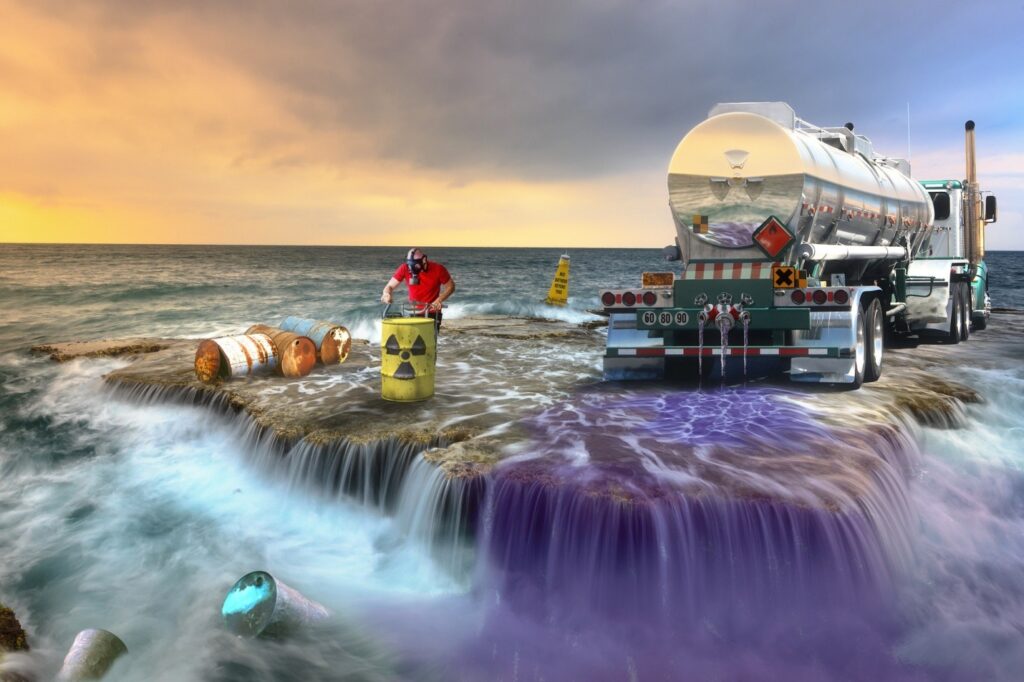Our Reclaim Waste Diaries
Our Reclaim Waste Diaries
Blog Article
Reclaim Waste for Dummies
Table of ContentsThe Reclaim Waste DiariesThe Reclaim Waste PDFsThe Main Principles Of Reclaim Waste The Of Reclaim WasteAll About Reclaim Waste
Check out the types, occurrences, and kinds of fluid waste. Residential sewer waste describes the waste and items from a property sewage-disposal tank. This type of waste is created by humans in residences, schools, and other structures. This only consists of septic systems that have a drainpipe area. The appropriate management and disposal of residential sewer waste need liquid waste to be transferred to a sewage treatment plant where the correct approaches and devices are used to cleanse and throw away waste.
Business waste often consists of prospective threats, such as flammable products or a mixture of fluid and solid waste products, and requires an advanced and thorough disposal process. The disposal of business waste typically includes the filtration of waste prior to transport to ensure safe and proper disposal. Industrial waste is developed from results and drainage of commercial processes and manufacturing.
This kind of waste can not use the very same sewer monitoring transport or processes as septic or business liquids. The commercial waste administration process calls for the inspection and screening of fluid waste prior to it undergoes the disposal procedure (liquid waste removal melbourne). Drainage waste is the liquid waste that originates from drainage and excess stormwater in very inhabited areas or cities
Drainage waste can trigger contamination and flooding if not managed appropriately. Guaranteeing proper waste administration can avoid calamities and reduce environmental harm.
Reclaim Waste Can Be Fun For Everyone
Contact PROS Providers today to find out about our waste monitoring and disposal services and the appropriate ways to take care of the fluid waste you produce.
(https://linktr.ee/leonaube33101)This supposed 'wastewater' is not only an important source but, after treatment, will be launched to our land, rivers or the sea. Utilized water from toilets, showers, bathrooms, cooking area sinks, washings and industrial procedures is known as wastewater.

water used to cool down machinery or tidy plant and equipment). Stormwater, a type of wastewater, is drainage that streams from farming and city locations such as roofs, parks, gardens, roads, paths and gutters right into stormwater drains, after rain. Stormwater flows without treatment directly to local creeks or rivers, at some point getting to the sea.
Reclaim Waste Things To Know Before You Get This
In Queensland, most wastewater is dealt with at sewer treatment plants. Wastewater is moved from residential or commercial sites via a system of drains and pump terminals, recognized as sewerage reticulation, to a sewer therapy plant.
The Division of Natural Resources suggests neighborhood governments regarding managing, operating and preserving sewage systems and therapy plants. In unsewered locations, city governments might need homeowners to install individual or home sewage therapy systems to treat domestic wastewater from toilets, kitchen areas, restrooms and washings. The Department of Natural Resources authorizes using household systems when they are proven to be effective.
In some new subdivisions, treatment of some stormwater to remove trash, sand and crushed rock has actually started making use of gross contaminant catches. Wastewater therapy takes place in four phases: Eliminates solid issue.
Uses tiny living organisms recognizes as micro-organisms to damage down and remove staying liquified wastes and great particles. Micro-organisms and wastes are integrated in the sludge.
Indicators on Reclaim Waste You Should Know
Nutrient elimination is not readily available at all sewage treatment plants due to the fact that it requires costly specialist equipment. Clear fluid effluent generated after treatment might still include disease-causing micro-organisms - liquid waste disposal.

This normally implies wastewater needs to be dealt with or contaminants eliminated prior to it can Visit This Link be discharged to rivers. Most wastewater flows right into the sewerage system. Under the Act, city governments carry out authorizations and permits for ecologically appropriate activities (ERAs) involving wastewater launches that could have a regional impact. The department carries out approvals and licences to Periods including wastewater releases that may have a regional or statewide effect.
The Reclaim Waste Diaries
Monitoring provides accurate info regarding water high quality and can verify that licence conditions are being satisfied. The details obtained via tracking offers the basis for making water quality decisions.
Report this page